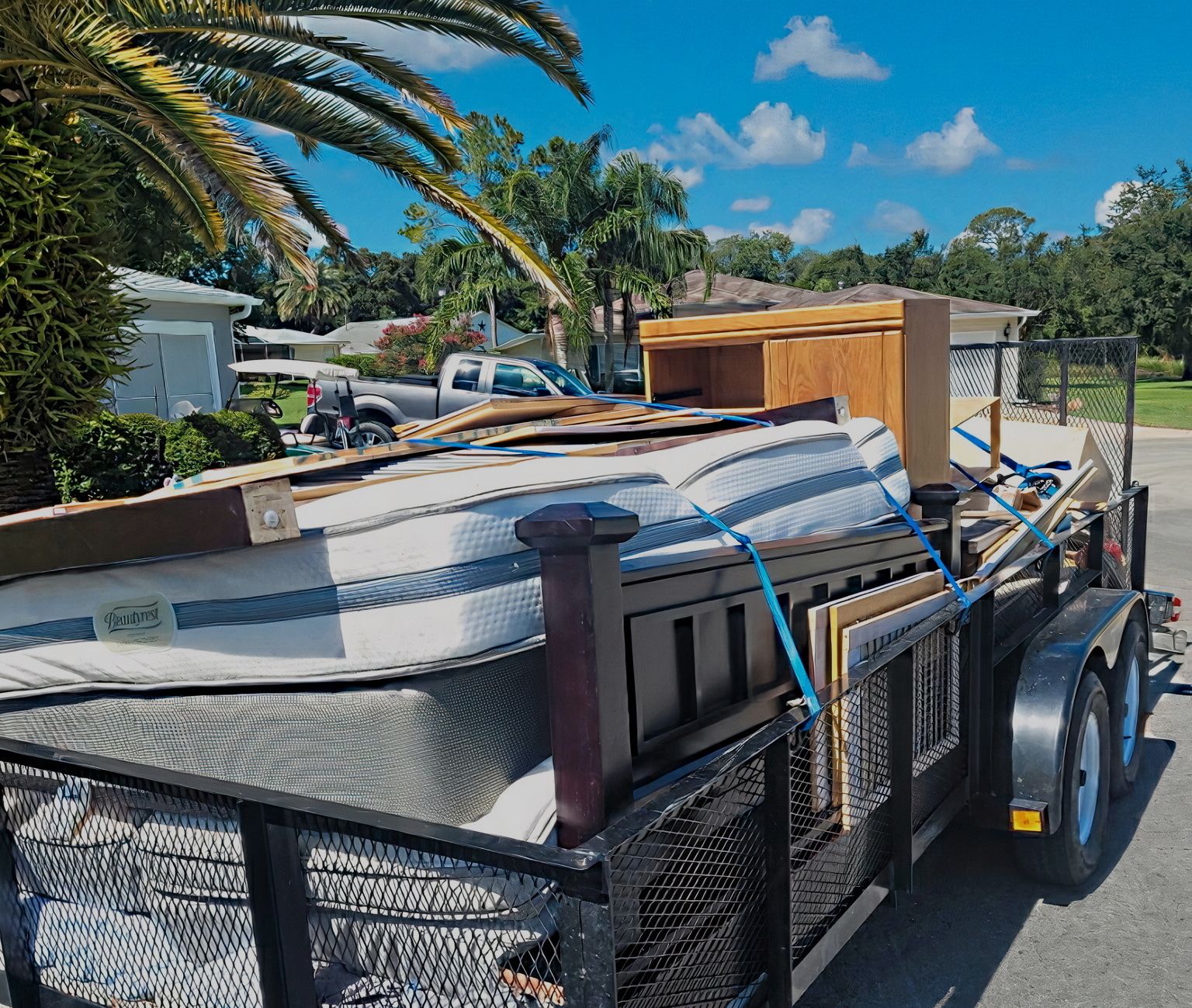Home Appliance Removal Atlanta: Quick and Safe Disposal Providers
Wiki Article
Expert Waste Monitoring Methods Tailored for Industrial Settings
In commercial atmospheres, the monitoring of waste is an essential facet that requires precision and expertise. Tailoring waste administration strategies to suit the distinct requirements of commercial setups is not just beneficial yet crucial for keeping operational effectiveness and environmental sustainability. By recognizing the intricacies of various sorts of industrial waste, applying proper managing treatments for harmful materials, and developing effective reusing techniques, companies can significantly minimize their ecological impact and potential obligations. The pursuit for enhanced waste monitoring in industrial settings includes a meticulous strategy that stabilizes governing conformity, cost-effectiveness, and environmental obligation.Relevance of Tailored Waste Administration
Tailored waste administration methods are crucial in industrial settings to maximize source utilization and lessen ecological influence. Industrial operations generate a significant quantity of waste, varying from solid byproducts to chemical toxins, positioning a hazard to the atmosphere otherwise handled successfully (Commercial junk removal atlanta). By customizing waste administration techniques to fit the certain demands and obstacles of each industrial center, business can not only abide by regulations yet additionally enhance functional effectiveness and sustainabilityOne secret facet of tailored waste management is performing an extensive waste assessment to identify the types and quantities of waste produced. This analysis enables companies to apply targeted options such as recycling programs, waste segregation methods, and waste-to-energy campaigns. By understanding the composition of their waste streams, industrial centers can establish economical techniques to lower waste generation at the resource, bring about long-term ecological advantages.

Sorts Of Industrial Waste
What are the different groups of hazardous waste commonly created in manufacturing procedures? Hazardous waste can be classified right into several main categories based upon its make-up and features. Contaminated materials is just one of the most important kinds, consisting of chemicals, solvents, hefty steels, and various other products that position a threat to human wellness or the setting. This group commonly needs unique handling and disposal methods to avoid contamination and make sure safety.One more typical kind of commercial waste is non-hazardous waste, which incorporates materials like paper, plastics, and packaging waste. While non-hazardous waste may not position immediate dangers, correct monitoring is still necessary to reduce garbage dump usage and advertise recycling and sustainability practices.

Hazardous Waste Handling Procedures
Effective monitoring of harmful waste in commercial settings necessitates rigorous adherence to established dealing with procedures to minimize risks and guarantee environmental safety. Contaminated materials handling treatments involve several essential actions to minimize the possible influence on human health and wellness and the setting. Appropriate identification and categorization of dangerous waste are important. This consists of determining the qualities of the waste to establish the suitable handling, storage space, and disposal methods.Second of all, once determined, harmful waste should be thoroughly segregated from non-hazardous waste to protect against contamination and make sure appropriate therapy. Storage of harmful waste must adhere to regulations pertaining to containment, labeling, and compatibility to prevent leaks, spills, or other cases that could endanger workers or the environment.
Furthermore, dealing with procedures need to consist of using personal protective devices, employee training, and emergency situation response procedures. Regular examinations, monitoring, and paperwork of unsafe waste handling activities are essential to preserving compliance and identifying locations for renovation. her response By following these structured procedures carefully, commercial facilities can efficiently manage dangerous waste and support their dedication to ecological stewardship.
Carrying Out Effective Reusing Practices

To apply efficient recycling methods, industrial facilities need to first conduct a waste audit to identify the kinds and quantities of recyclable products generated in their procedures. Based on this audit, companies can after that develop assigned recycling stations, give suitable training to workers on appropriate sorting methods, and team up with relied on reusing companions for the click to investigate collection and processing of products. In addition, setting particular reusing goals, tracking progression, and consistently interacting with staff about the relevance of reusing are essential steps to make sure the success and sustainability of reusing efforts in commercial setups.
Tracking and Constant Improvement
To make sure the performance and sustainability of waste monitoring techniques in industrial setups, the implementation of durable monitoring and constant renovation processes is crucial. Surveillance involves tracking vital performance indications (KPIs) such as waste generation rates, recycling percentages, and disposal expenses. Routinely analyzing these metrics allows services to determine locations for enhancement and determine the check out this site success of executed waste monitoring campaigns.Continual renovation is necessary for fine-tuning procedures over time. It includes evaluating keeping an eye on information, determining inadequacies, and executing adjustments to optimize waste monitoring methods even more. This repetitive strategy promotes a society of continuous improvement and development within the organization.
Utilizing technology like waste monitoring software and IoT sensors can simplify monitoring initiatives, supplying real-time data for educated decision-making. Staff member training and engagement also play an essential function in guaranteeing the success of tracking and continual enhancement initiatives, as frontline staff are usually principals in waste administration procedures.
Final Thought
Finally, customized waste management techniques are critical for industrial settings to properly deal with various sorts of waste, consisting of hazardous materials. By applying reliable recycling techniques and constantly monitoring and enhancing waste administration procedures, markets can decrease their environmental influence and make certain conformity with guidelines. It is vital for business to prioritize waste monitoring to shield the environment and promote sustainability in their procedures.Report this wiki page